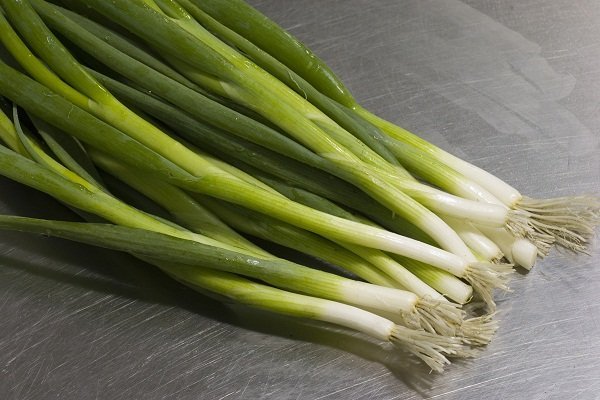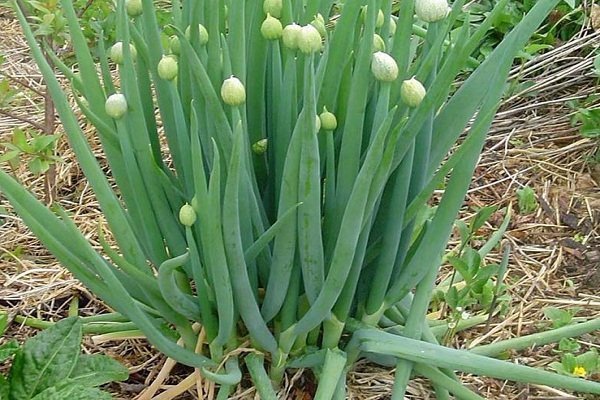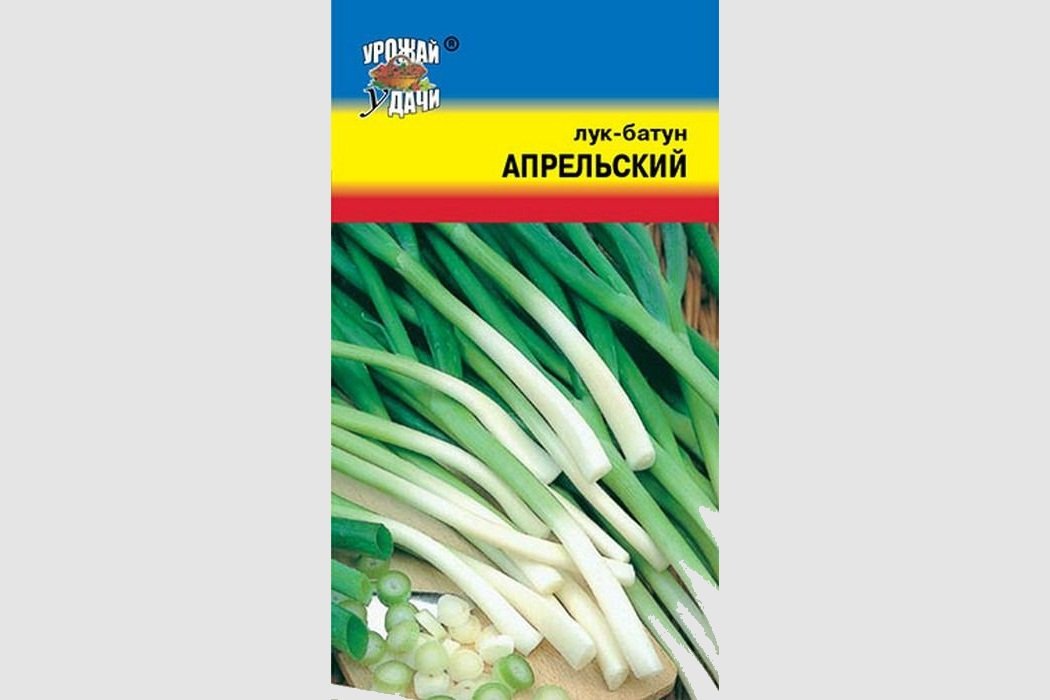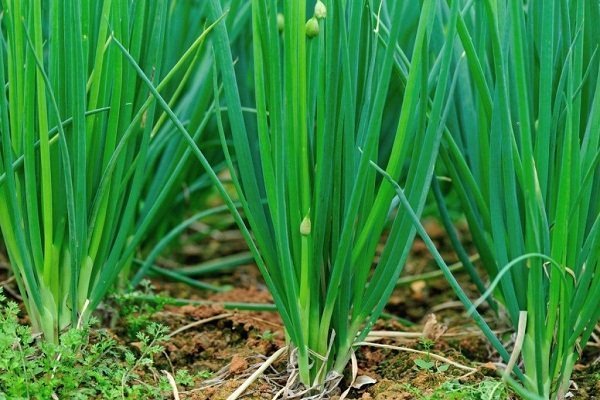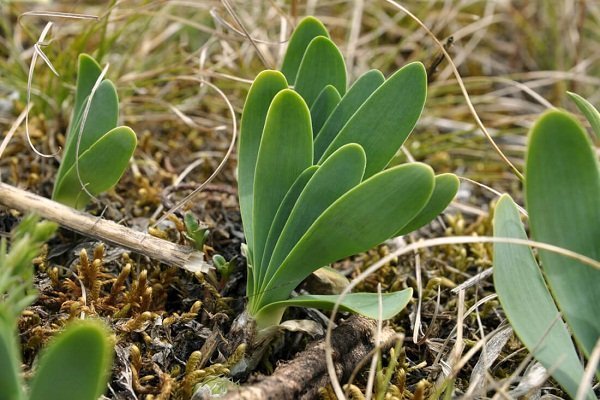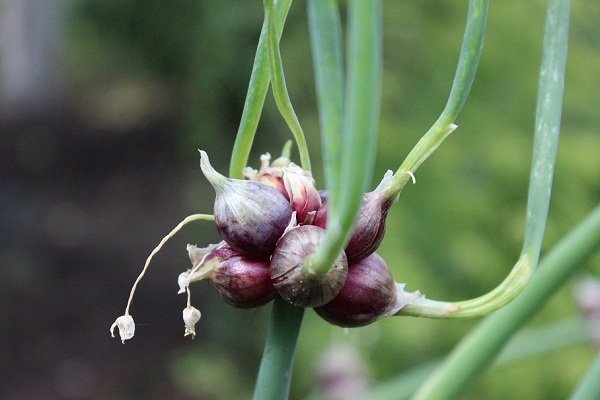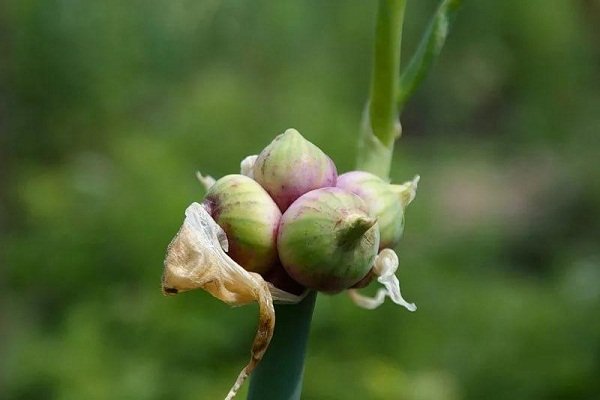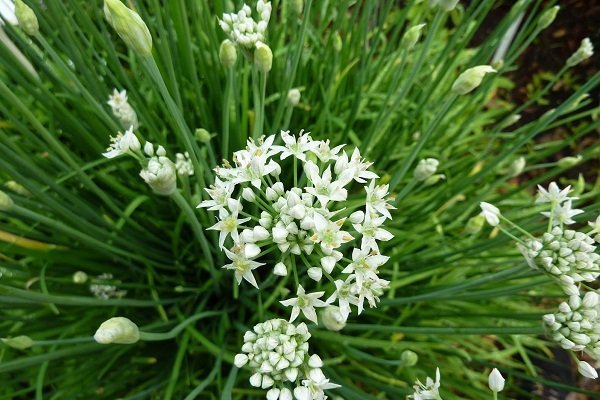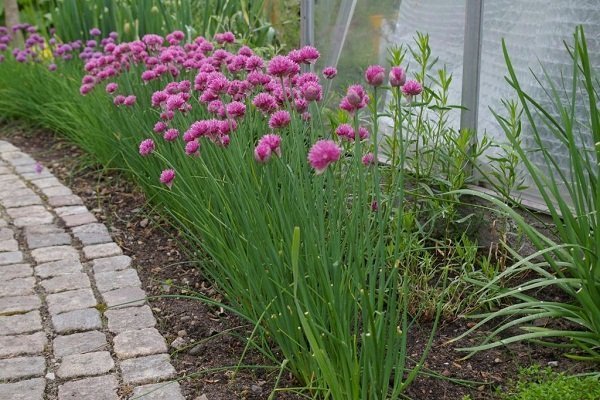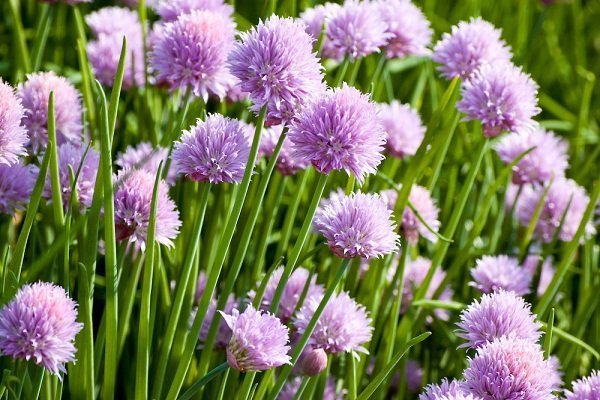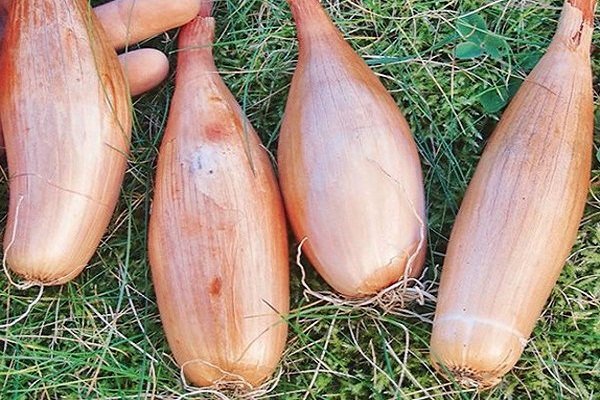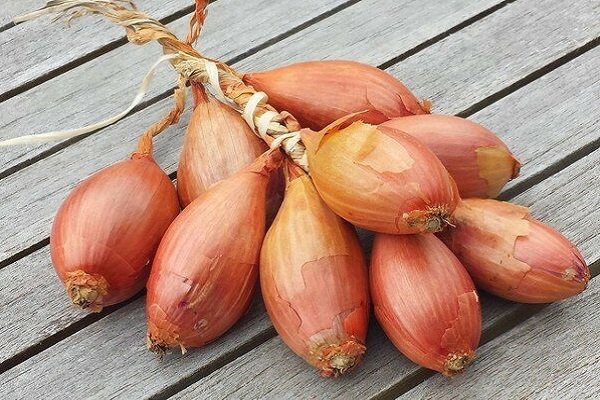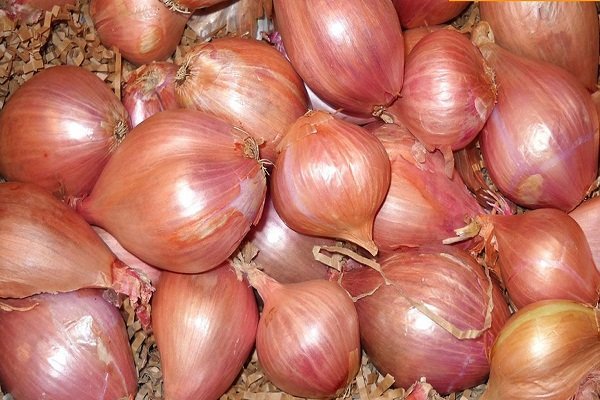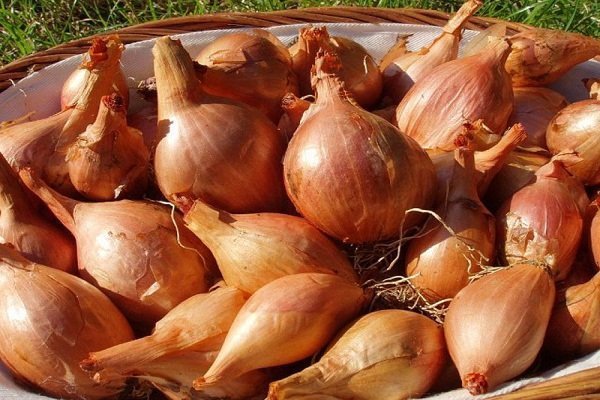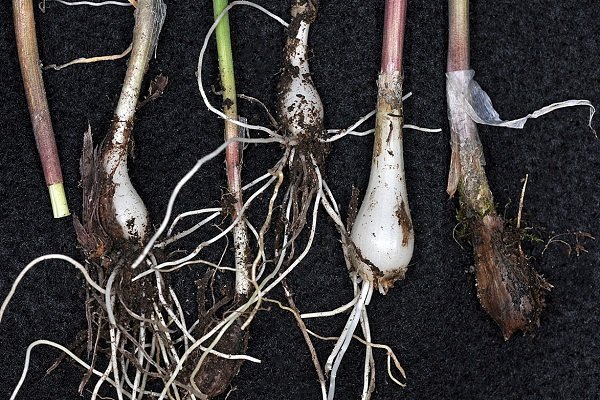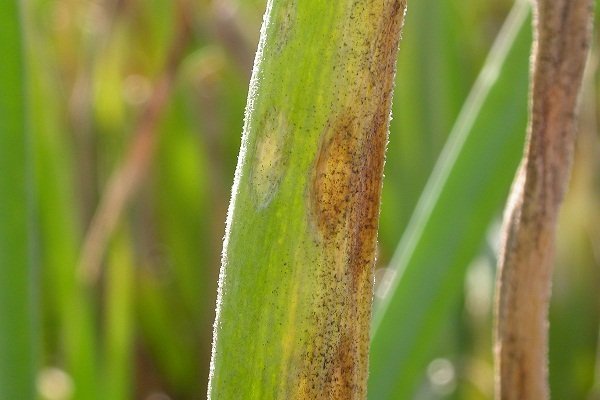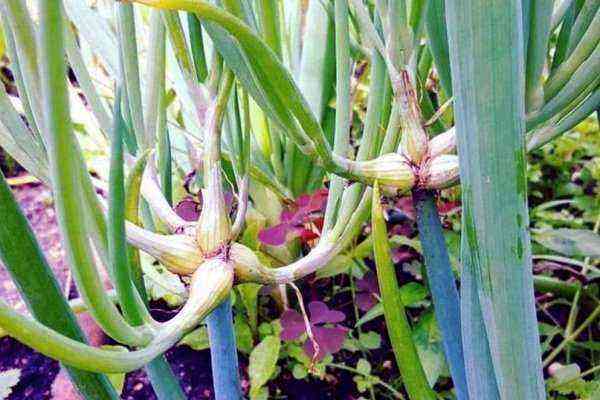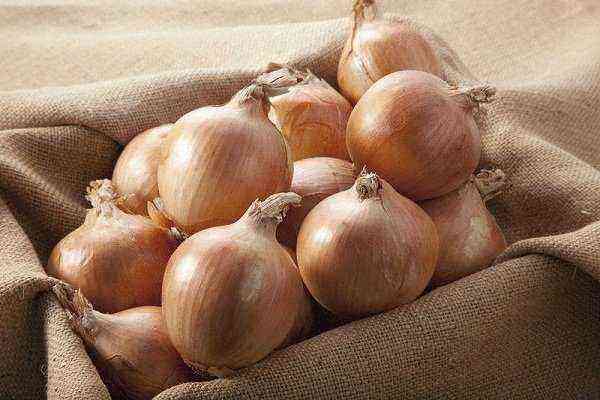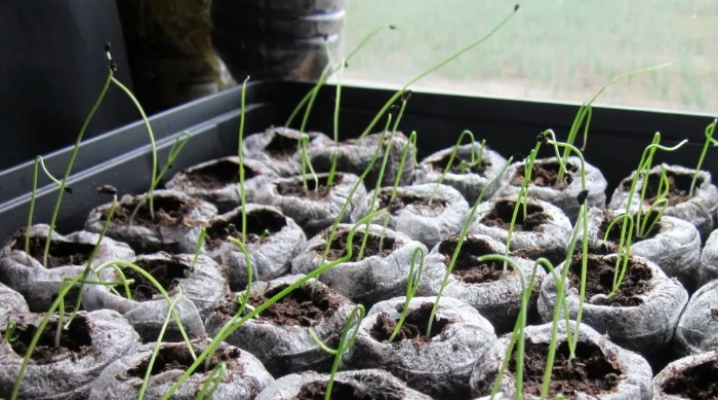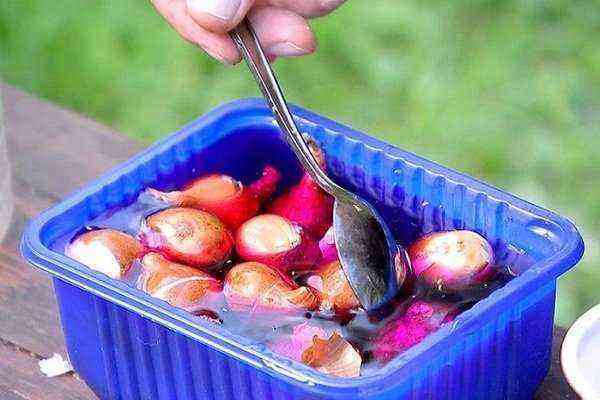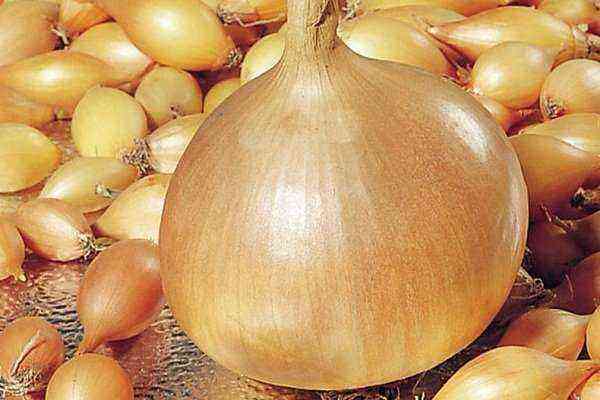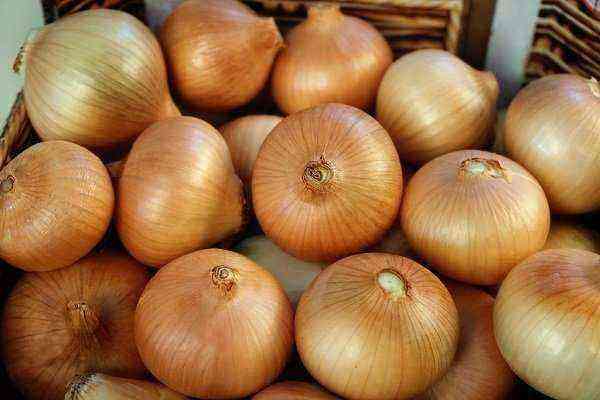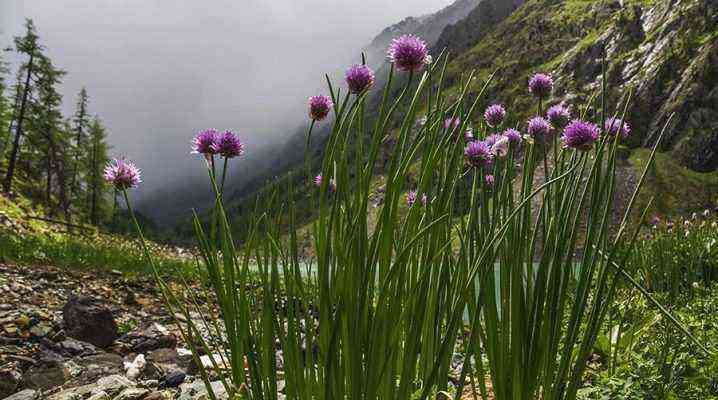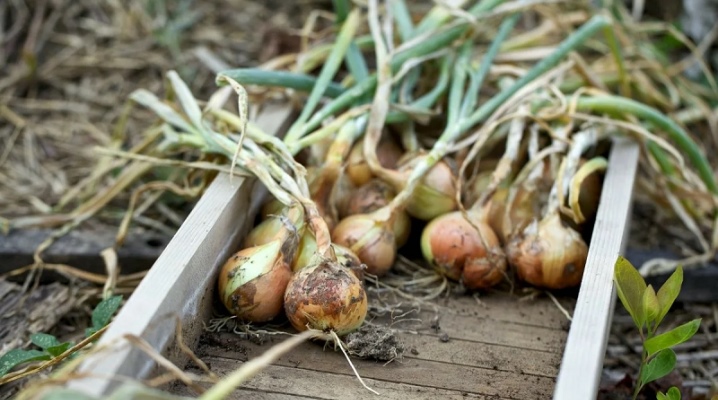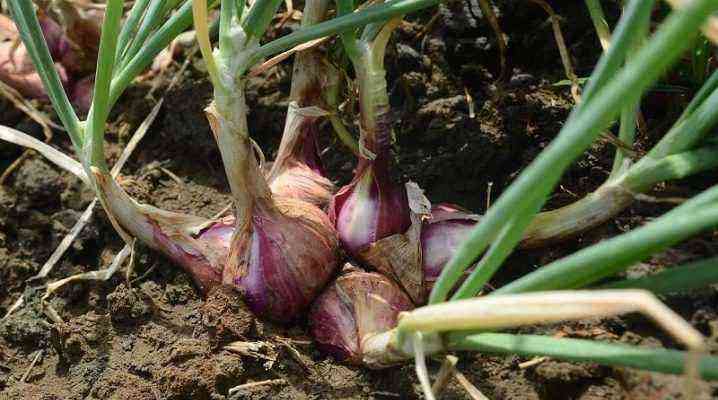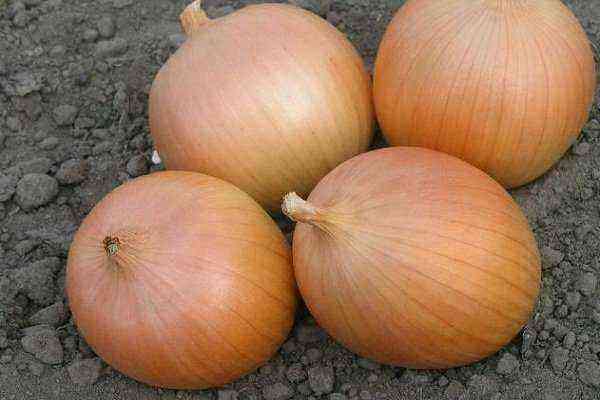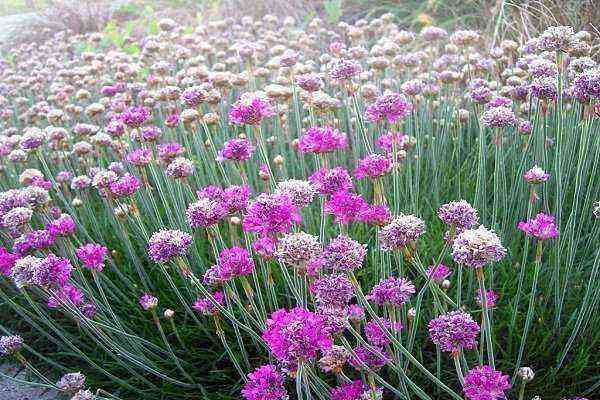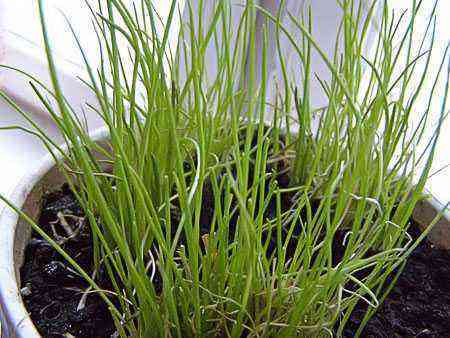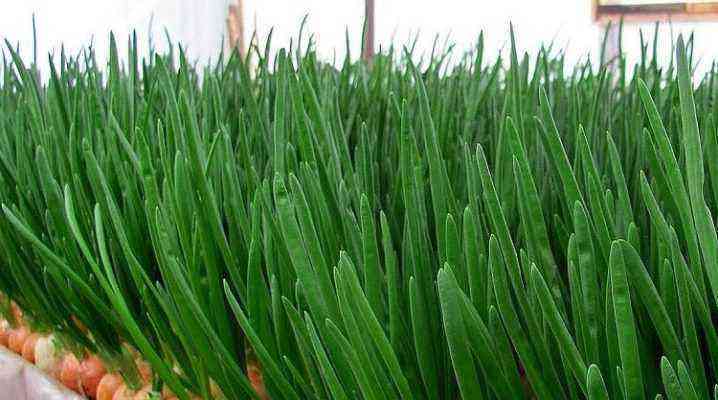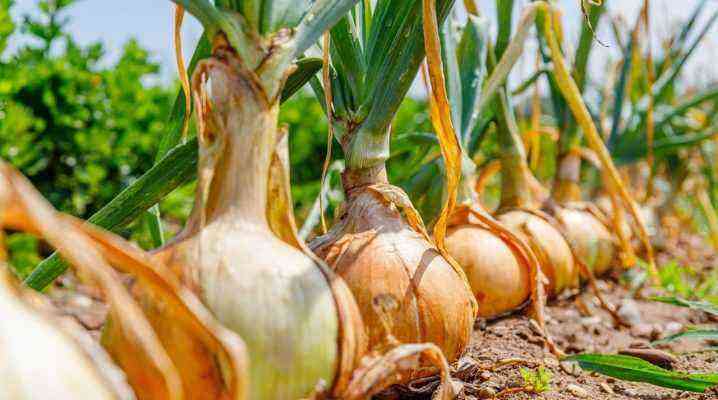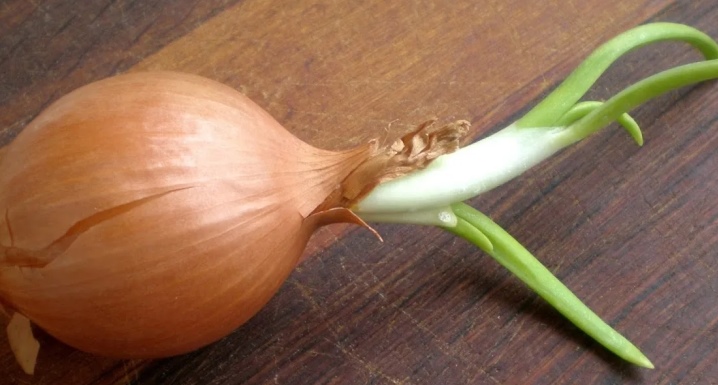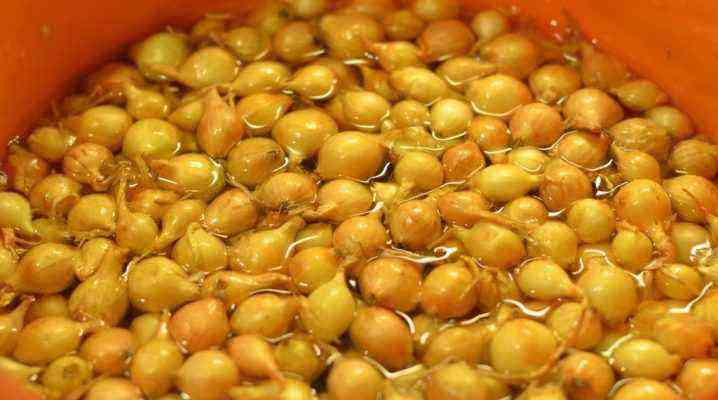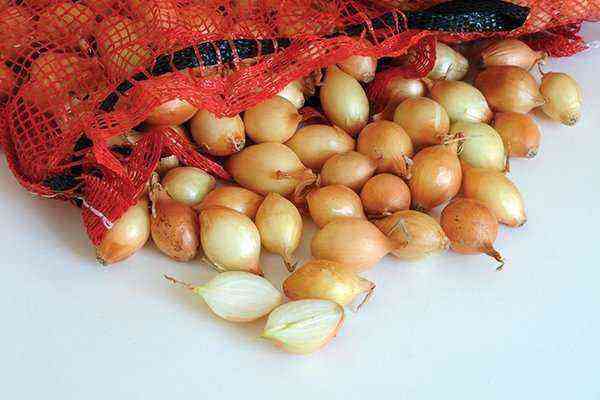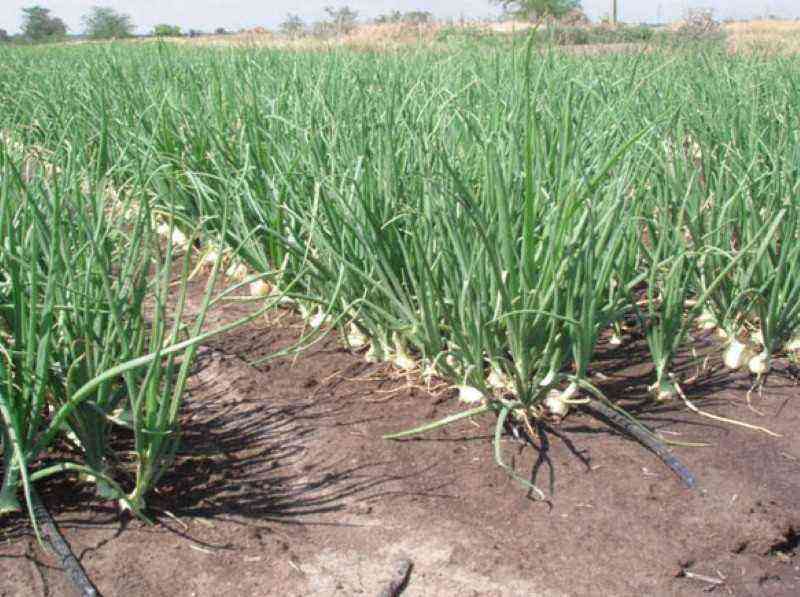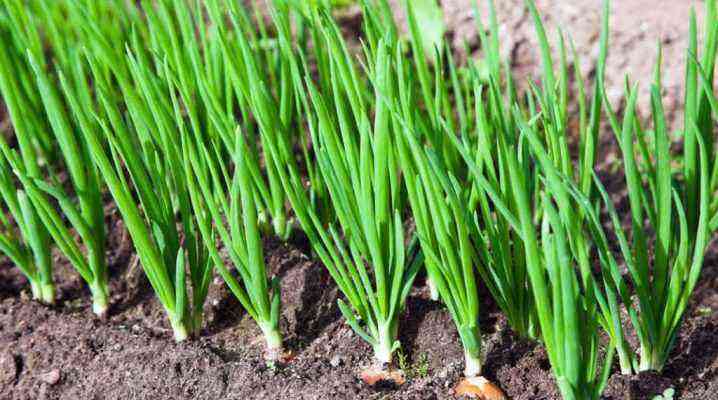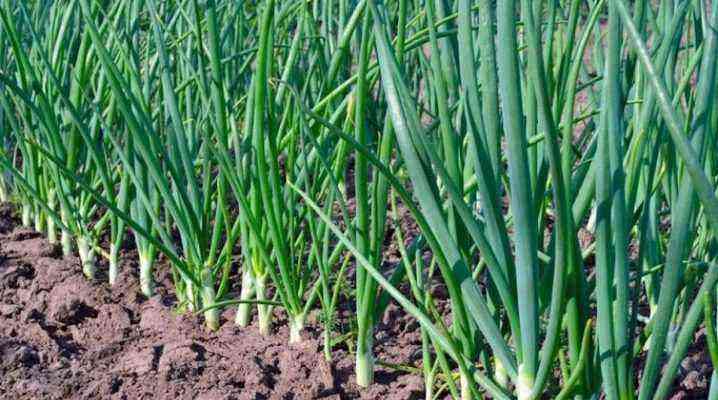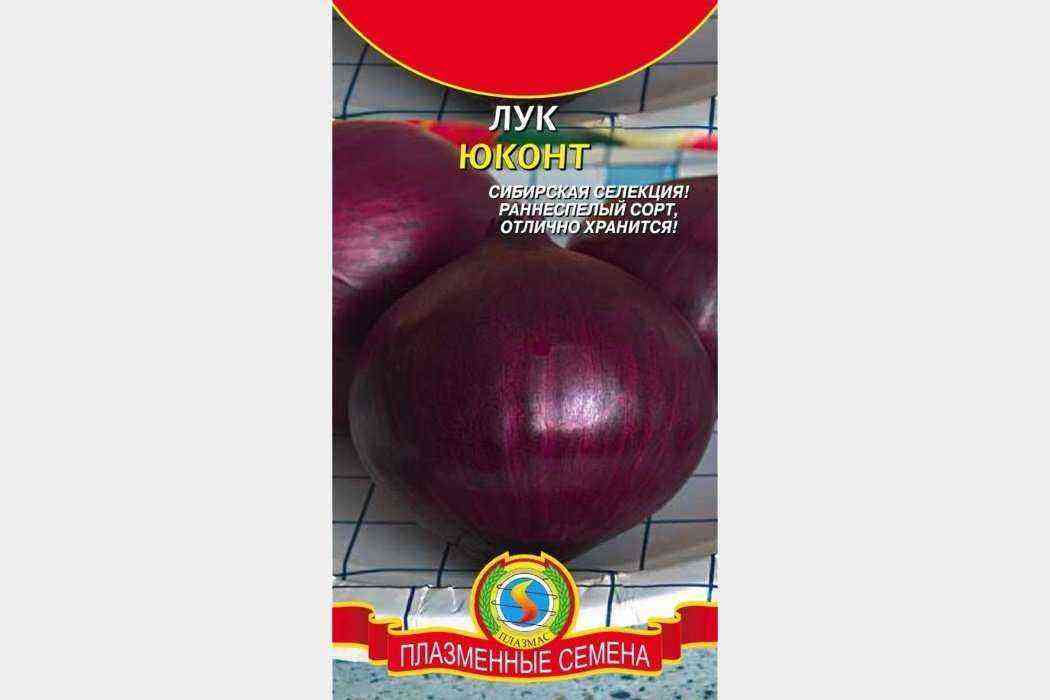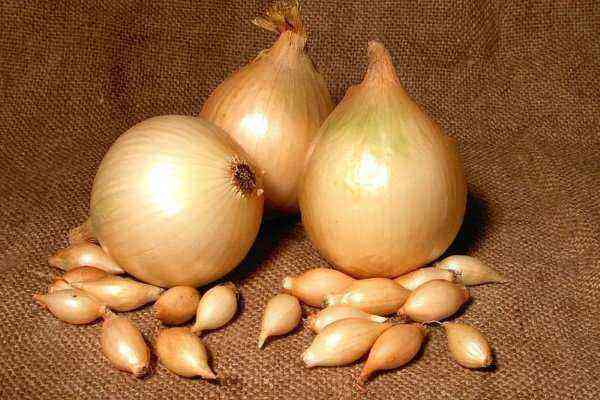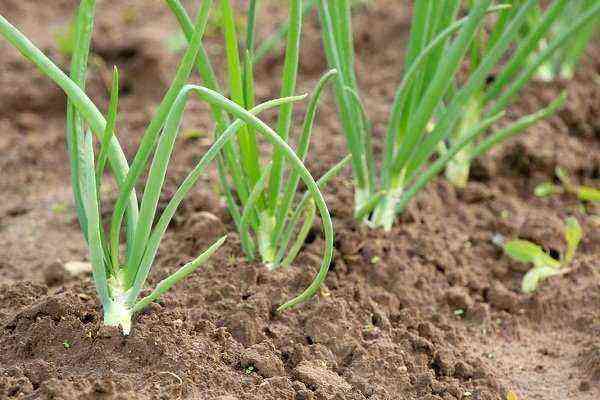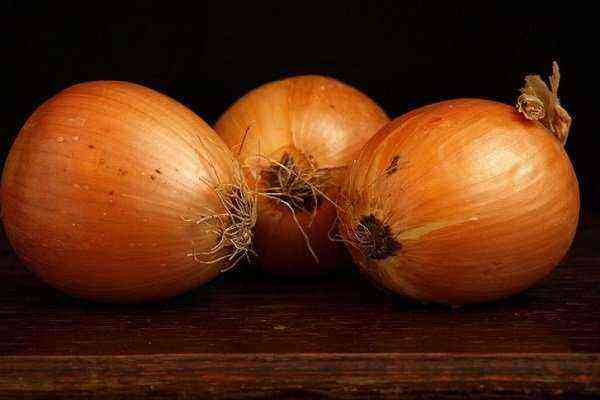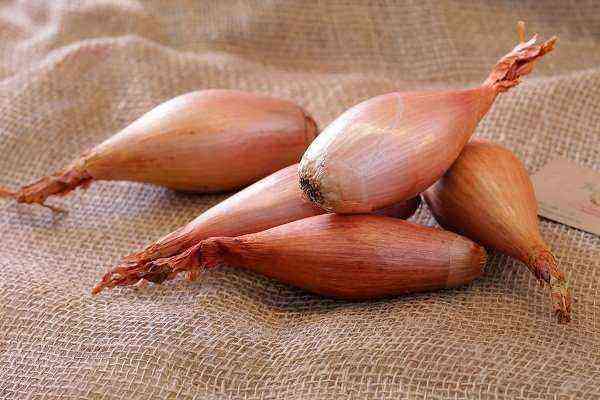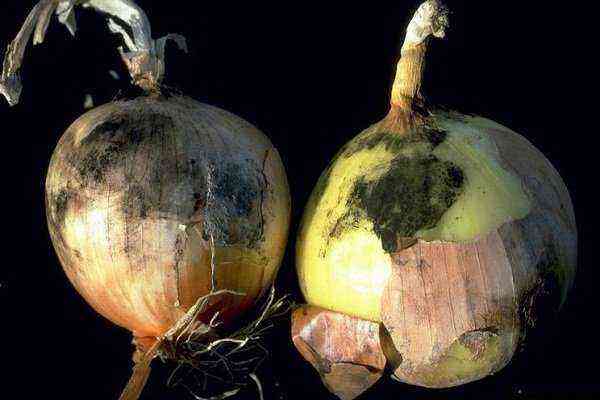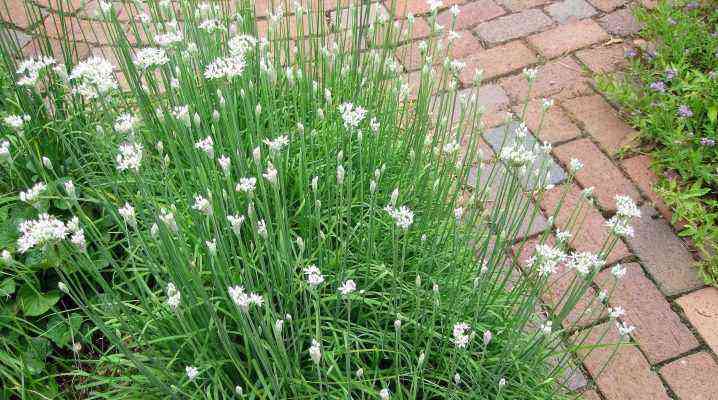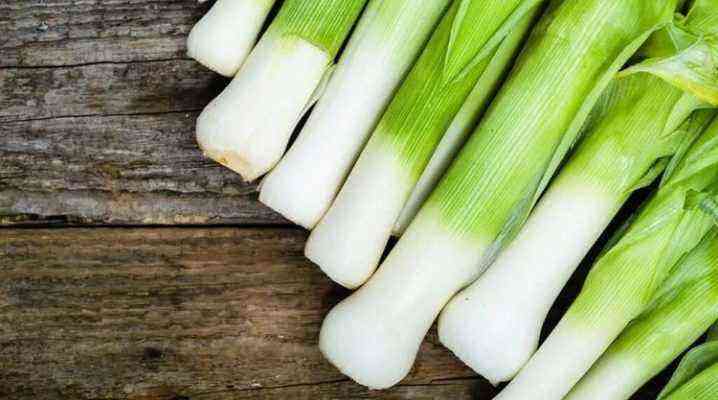Perennial onions take pride of place in the plots of many gardeners. This is due to the high yield of the crop, the variety of its varieties, the ease of care during cultivation and the absence of the need to plant other plants in this place for the next year.
Characteristics of perennial onions, advantages and disadvantages
Perennial onions have many varieties, which sometimes do not resemble each other at all. Despite all the variety of varieties, perennial onions have a number of common features that can be attributed to the advantages or disadvantages of the plant.
Advantages:
- longevity in one garden – sowing every 3-5 years;
- the content of a large number of useful trace elements and vitamins;
- good frost tolerance (some species can withstand temperatures down to -40°C);
- high yield;
- ease of soil preparation;
- high immunity to many diseases;
- ability to develop under snow cover;
- removal of the first crop after the snow has melted;
- pleasant spice and aroma of many varieties;
- decorative flowering varieties.
Disadvantages:
- using only the green upper part of the plant, as opposed to the bulbs of an annual onion;
- mandatory systematic weeding to avoid overgrowing beds with weeds.
Gardeners are happy to grow perennial onions, not considering its shortcomings to be critical. It does not require frequent replanting and scrupulous care, and a gradual harvest occurs almost from the snow melting to the very frost. Thanks to the decorativeness of many species, the planting of this crop becomes not only a source of lush greenery throughout the year, but also a wonderful decor for the site.
Varieties of perennial onions
More than 200 varieties of perennial onions have taken root in the Russian climate. Every year more and more varieties appear due to the cultivation of wild species. There is a list of the most popular and well-known varieties. Gardeners prefer them because of the high yield and ease of care.
Onion-Batun
The leader in popularity among perennial species is onion batun. Outwardly, it is similar to onion – feathers are piped, hollow, dark green and long. There is no bulb, and the pseudo-bulb, which produces leaves, is not particularly used for food. The root system is strong and powerful, it begins to push feathers to growth immediately after the snow melts. In one place without problems gives a good harvest for 5-6 years in a row. The culture propagates by dividing the bush and seeds.
There are several subspecies of onion-batun, which differ in their economically valuable properties.
Japanese
The bows of this subspecies grow of medium power, have large leaves up to 60 cm in length. The taste of Japanese subspecies is spicy and spicy, they are characterized by average winter hardiness. The most common varieties of the Japanese subspecies of the onion-batun:
- Harukioka;
- Salad 35;
- Long Tokyo.
Russian
This subspecies includes medium-sized highly branched dark green leaves up to 30-40 cm long. They taste sharp and contain a lot of ascorbic acid. The foliage quickly coarsens, gaining mass, but by the third year it branches up to 40-50 shoots from a bush. The Russian subspecies does not freeze even in the most severe cold.
Popular varieties of this subspecies of onion-batun:
- Maysky 7;
- Khibiny;
- Gribovsky 21;
- April 12.
Chinese
The foliage of this subspecies grows very high – up to 130 cm, does not branch, and only by the age of 2-3 gives about 3-5 branches. Greens are juicy and especially sharp, but with low winter hardiness. The inability to tolerate severe frosts is the main reason that affects the slow spread of the Chinese subspecies in most of the country.
Slime
This type of perennial onion differs from its counterparts in flat, wide, juicy feathers. Slizun is not picky about the abundance of light, but loves good watering. With proper nutrition, it gives a crop on one bed for 5 years, deepening its roots by 20-25 cm into the soil. It tolerates winter well.
Juicy and tender slime leaves are often used to make marinades and as a seasoning for various dishes. Due to the abundance of nutrients, the plant is often used for therapeutic and prophylactic purposes for stomach ulcers and anemia.
Common varieties:
Tiered
This species is rightfully considered the main early maturing among perennial bows. Already at the beginning of spring, the first green feathers of a multi-tiered onion begin to be cut from the garden. Growing, the onion forms 2-4 tiers of air bulbs instead of inflorescences. It is with their help that the main reproduction of the species occurs, in addition to dividing the uterine bulb.
A multi-tiered onion does not require a dormant period for growth even in high frosts, so it is planted all year round. In one place, it actively bears fruit for 7 years. All parts of the plant are suitable for use – feathers and air bulbs. The foliage is tender and does not coarsen on the bush for a long time, so it is used with pleasure for preparing salads, hot dishes and marinades.
Popular varieties of multi-tiered onions:
- Memory;
- Chelyabinsk;
- Characters.
Sweet onion
This type of perennial onion is known for wide large leaves, reaching up to 50 cm in length. The belt-shaped foliage has a delicate taste with a high content of vitamin C and low fiber content. Greens preserve the saturation of taste both in spring and autumn, without changing the useful composition. Fragrant onion has a good ability to resume growth after cutting the feather, so it can please the harvest until the end of November.
In the first year of growth, this species forms a pair of shoots, each of which produces 4-6 leaves up to 30-35 cm long. In the second year of life, fragrant onions already form arrows with white flowers. The inflorescences are collected in a simple umbrella and exude an almond aroma.
One of the most popular varieties of fragrant perennial onions is Stargazer. It grows everywhere, regardless of the climatic conditions of the country. The variety is famous for its high leaf growth rate up to 60 cm. Feathers up to 1,5 cm wide have a weak semi-sharp garlic taste.
Schnitt
Small tubular Schnitt leaves have a mild-spicy taste and good storage and transportation performance. The first foliage appears after the snow melts due to the good frost resistance of this variety of culture. A full-fledged crop is harvested 2-3 times per season or pruned a little as it grows. It shows itself well until the 3rd year of life on the same bed, after which it loses productivity and requires updating of planting material and place of residence.
Due to the decorativeness of many varieties, Schnitt is often used as a designer decoration of the site. Blooming onions look like a colorful carpet because of the spherical umbrellas on the flower-bearing arrows. The color palette of this culture is from pale pink to deep purple.
Varieties of Schnitt, which are popular with gardeners and have a good feather yield:
Decorative varieties of onions that breeders bred to decorate flower beds and borders of the site:
- curb;
- Elvi;
- Forescate;
- The Moscow.
Shalot
Shallot is popular among perennial crops due to its high nutritional and beneficial properties. It is nicknamed the “magpie” because of the many primordia of the bulbs, which show themselves well when lying down. One bulb-womb is capable of producing about 7 daughters, each of which grows up to 6 cm weighing 50 g. Some varieties are able to give shares even during storage.
Shallot greens are low (up to 25 cm), but very tender and juicy, tubular in shape and dark green in color. Feathers grow quickly and luxuriantly, which makes it possible to collect an impressive bunch of feathers from one turnip already after 3 weeks after sowing.
Popular varieties of shallots among summer residents:
- Siberian dacha;
- Kuban yellow D-322;
- Belozerets 94;
- Sprint.
Planting and transplanting perennial onions
Despite the ease of care and undemanding culture to the attention of the gardener, there is a system and rules for planting perennial onions. To avoid problems and collect a good harvest every year from the same place, it is necessary to properly prepare the soil and plant the plants correctly.
Site Preparation
Agronomists involved in the cultivation of perennial onions believe that soil preparation should begin in the fall. The optimal parameters for soil readiness for planting a crop are as follows:
- without ground water;
- light composition of the earth;
- slightly acidic or neutral soil – pH 6-7.
To achieve such a balanced indicator, the following procedures are carried out:
- thorough digging of the site;
- removal of weeds, the neighborhood with which is detrimental to perennial onions;
- application of phosphorus-potassium and organic fertilizers.
In the spring, before planting, it is necessary to apply nitrogen fertilizer, weed the beds and loosen the soil deeply by 15-20 cm.
Giving preference to a place for perennial onions, it must be borne in mind that the area under the beds will be occupied by this crop for 5 years.
Planting perennial onions
There are practically no strict restrictions on the timing of planting onions – they are grown in autumn, summer and spring. Planting perennials takes place by seeds or by dividing the bush, the choice of method depends directly on the variety of crop.
Reproduction by seeds
Usually the seeds of perennial onions are laid in the ground in spring or before winter. This directly affects the speed of seedlings and further development.
spring sowing
When sown in open ground, sprouts germinate no earlier than 2 weeks after planting. Further development proceeds slowly, periodically requiring the attention of the gardener.
Experienced agronomists, when planting seeds of perennial onions, in order to avoid a prolonged period of germination in open ground, resort to the home seedling method. This procedure consists of several stages and begins in March:
- Processing perennial onion seeds: washing in potassium permanganate, soaking in water at room temperature for 24 hours, drying.
- Surface planting of seeds in seedling boxes.
- Growing seedlings at home for 2 months.
- Transplanting finished seedlings into beds on site in May.
It is necessary to maintain the correct temperature in the room before germination – 20-22 degrees, after – 18-20 degrees.
The soil before the removal of seedlings of perennial onions into open ground is loosened, drained and fertilized as necessary.
Podzimny sowing for early greenery
To obtain a quick harvest of feathers in early spring, they resort to winter sowing. When the soil temperature drops to 3-4 degrees in autumn, a dense sowing of perennial onion seeds is done. For the effective cultivation of an early feather, the usual seed rate is increased by 20-25%.
With such a planting in the spring, seedlings appear 10-15 days earlier. This method is also convenient because low temperatures during feather growth in early spring do not allow the culture to shoot quickly. This allows the gardener to collect high quality juicy feathers for a long time.
Vegetative reproduction
Some types of onions are capable of reproduction only in a vegetative way. There are varieties of perennial onions that do not form a seed box or it is unsuitable for propagation. The vegetative method involves 2 methods of reproduction: the division of the main rhizome and the use of the airy upper part of the plant.
root division
Usually gardeners divide earthen bulbs in the middle of spring or already at the end of summer. To do this, take the rhizomes of only adult representatives of perennial onions. The bulbs are divided so that each planting material has at least one mature root with a well-developed underground system. Landing takes place on the beds according to the scheme 20×70 cm, in which a bush of perennial onions is deepened by 8-10 cm into the ground.
If the root system of the planting bush is weak, it is planted 4-5 cm into the soil.
Using Bulbs
For the propagation of many varieties of perennial onions, bulbs, daughter and sighting bulbs are used. With growth, the flower arrow gives rise to an inflorescence in which bulbs are formed. The development of the feather does not end there – the arrow from the bulb stretches further, forming another floor of air bulbs after 20-30 cm. Each of these air inflorescences can contain up to 30 bulbs.
It is considered optimal to plant such material in open ground immediately after the autumn harvest. To do this, before the onset of frost, bulbs are planted in the ground to a depth of 5-6 cm at a distance of 15-20 cm.
If it was not possible to plant air bulbs immediately after collecting the arrows, then they should be stored in a dry room with a negative temperature.
greenhouse cultivation
Many gardeners, having adopted the method of growing perennial onions in China and Japan, plant perennial onions in greenhouses or on windowsills. To do this, when planting onions in the furrows, they are additionally spudded to a height of 8-10 cm. This leads to a bleaching of the base of the plant and a delicate taste of the feather. When planting a multi-tiered onion in such insulated conditions, its feathers grow more juicy and reach a height of 40-45 cm.
Caring for perennial onions
Caring for the culture is simple and does not take much time from the gardener. There are a number of recommendations, the implementation of which ensures a rich harvest and the safety of the material for long-term cultivation:
- In the spring, around the furrows with plantings, the soil is deeply loosened up to 15 cm deep for good air exchange and removal of possible weeds.
- At the beginning of spring, plantings are fed with mineral fertilizers: 50 g of superphosphate, 40 g of potassium salt, 50 g of urea.
- After each cutting of the feather, the soil is loosened, watered to activate growth for the next cut.
- At the end of autumn, the beds are weeded, loosened and fed with a complex for a comfortable wintering of the material – 40 g of potassium salt per 35 g of superphosphate.
Throughout all stages of growth, the presence of moisture in the soil is monitored: with dry land, there will be poor development of the feather, and an excess of water will provoke rotting of the root system.
If a perennial onion does not grow well, then it is fed with urea – a tablespoon of the drug is added to a full bucket of water.
Subject to the basic rules for growing perennial onions, they develop well and give a lush harvest.
Prevention and control of diseases and pests
Perennial bows rarely get sick, but sometimes they are exposed to rust and powdery mildew. Insects that can harm this crop: tobacco thrips, onion fly and secretive proboscis.
Agronomists do not advise the use of chemicals to treat or get rid of pests of perennial onions. It is believed that prevention and implementation of protective measures are the most effective way to protect the culture from possible misfortunes. For this you need:
- Grow perennials on fertile soil in compliance with all parameters.
- Do not choose a transplant site that has grown onions or perennials for the past 4 years.
- Remove weeds periodically. Many harmful insects lay their eggs on weeds that grow in or near garden beds. Mature pests move to perennial onions and cause damage.
- Take exclusively healthy and high-quality material for sowing and vegetation.
- At all stages of culture growth, check and, if present, remove dead and damaged shoots that can become a breeding ground for diseases. This is especially true in late autumn to avoid overwintering of pests.
- Separate crops of onions and perennial onions. If the size of the plot does not allow such precautions to be taken, and onions are a priority, then it is better to refuse perennial onions altogether.
Pest repellent works well in many ways:
- Watering the beds with a composition based on peat with tobacco: 400 g of dried shag is boiled in 10 liters of water and, diluting the broth 40 times and adding 30 g of laundry soap to the watering part of the composition, water the soil.
- Mulching with peat mixed with tobacco dust.
- Spraying perennial onions with 1% Bordeaux mixture. To consolidate the result, you can repeat the treatment with this composition after 10 days.
- Careful inspection and, if necessary, removal of larvae, eggs, beetles in the beds.
Feathers of perennial onions are covered with a wax coating. When spraying, it is recommended to add a little sour milk or laundry soap to the solutions for effective adhesion of the drug to the plants.
Harvesting and storage of crops
Most varieties of perennial onions are cultivated because of the juiciness of the greens. They are harvested gradually as they mature, picking off several feathers, or 3-4 total cuts are carried out for the entire season. During mass harvesting, scissors are used, grabbing feathers to the very root.
To prolong fruiting, flower arrows are removed from the common green array of beds of perennial onions.
Extreme cutting is recommended to be carried out no later than a month before frost. Leaf storage occurs in the refrigerator in a loosely closed bag. Usually, feathers in the refrigerator feel comfortable for 10-12 days after being cut from the garden. You can freeze a large amount of feathers for long-term storage; after thawing, the onion retains most of its useful properties.
Few perennial varieties can boast bulb yields. If this option is grown, when harvesting bulbous species, watering must be stopped 2-3 weeks before digging. After excavation, the rhizomes are thoroughly dried and carefully discarded before laying. Bulbs are usually stored, without removing the husk, in a dry room at a temperature not exceeding 1 degree.
About the types of perennial bows, about their care and use in the design of flower beds, see the following video:
Perennial onions are increasingly gaining popularity among gardeners due to the cultivation of new varieties and the unpretentiousness of the culture. Compliance with all the rules of cultivation, prevention of pests and disease prevention allow you to get a lush harvest of perennial onions from one garden for several years.


